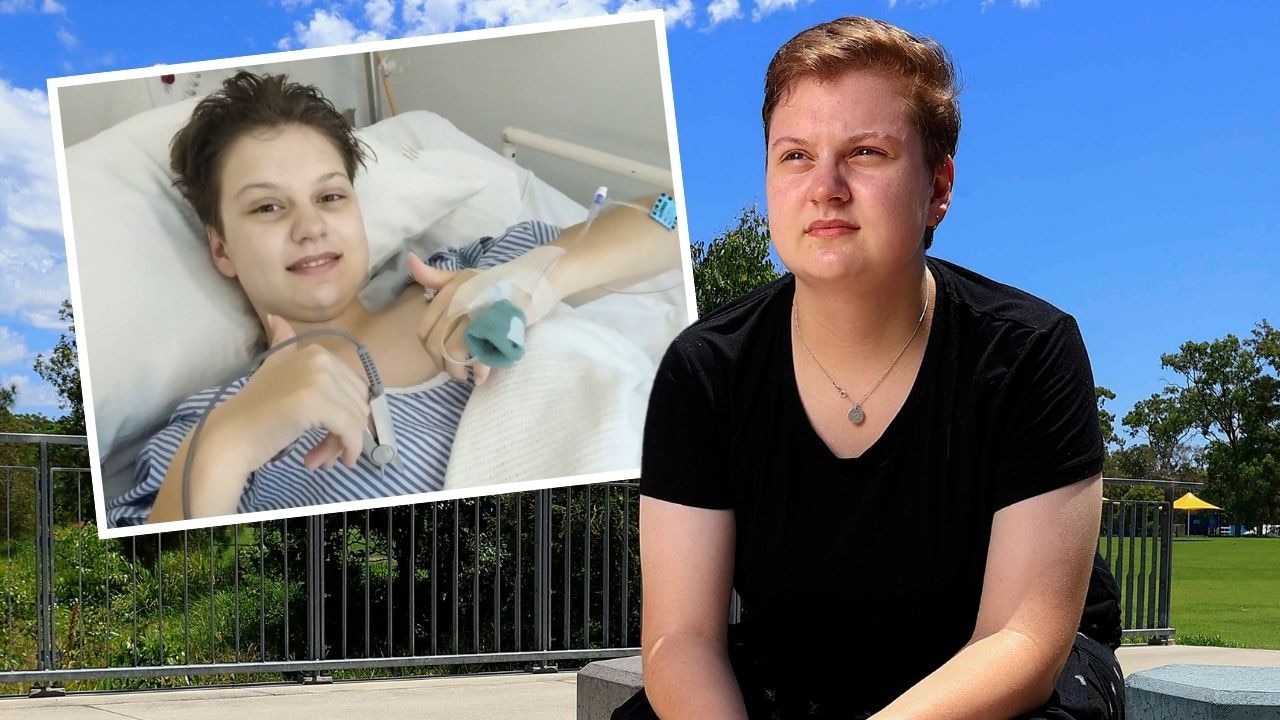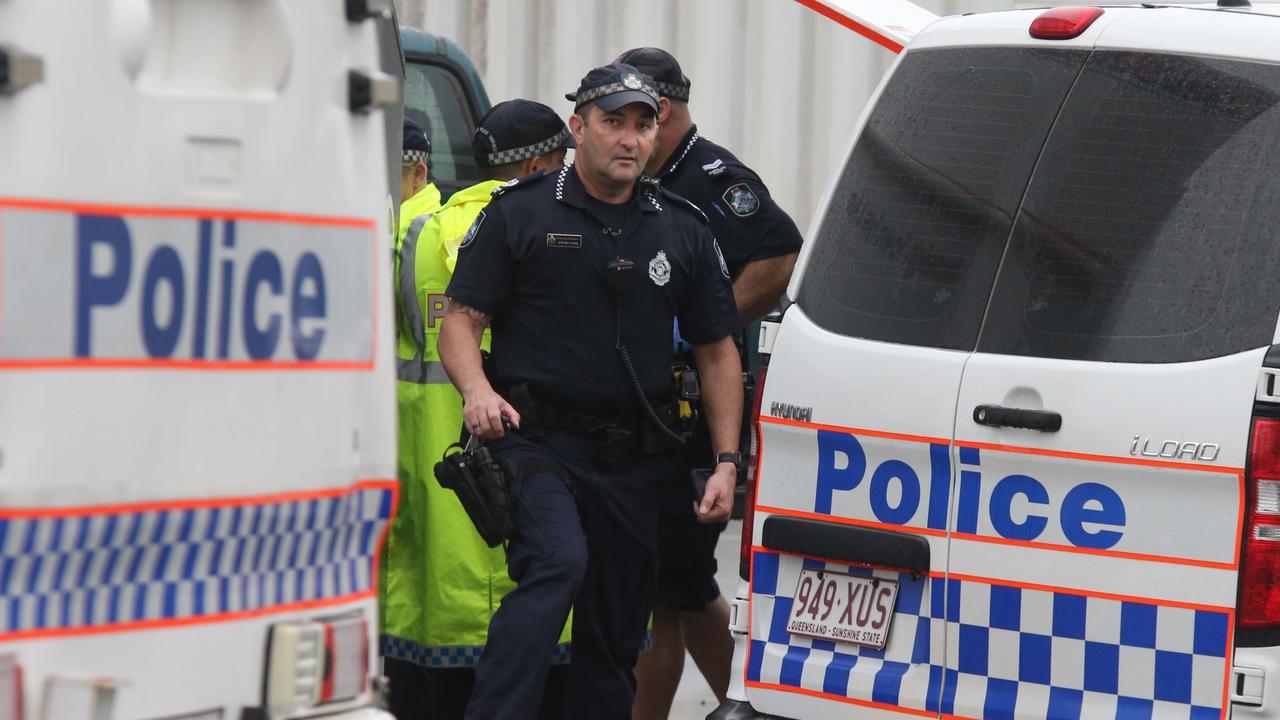Ratepayers warned waste rebate cuts to cost $86 extra
Queensland households and businesses face rising waste disposal costs as the state government phases out levy rebates.
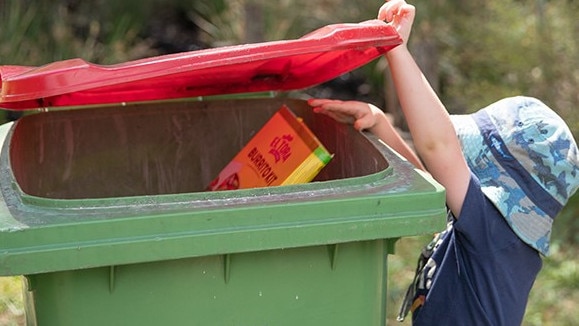
News
Don't miss out on the headlines from News. Followed categories will be added to My News.
Queensland households are bracing for steep rises in rubbish disposal fees, with local councils warning its 240L bin charge could jump by $86 a year by 2033.
The Local Government Association of Queensland said changes to waste levy charges, set to begin on July 1, will coincide with the state government phasing out rebates that have helped cushion the levy’s impact.
From July, the general waste levy for the metro zone, which includes Brisbane and 11 local councils, will rise to $125 per tonne, up from the current rate of $115 per tonne.
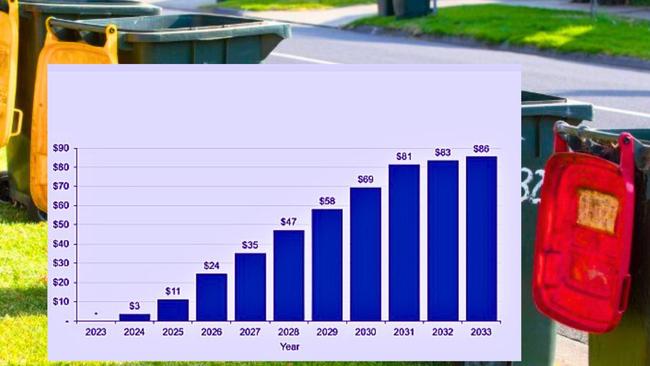
In the regional zone (Level 2), the 2025-26 levy rate has not been revealed but is expected to be similar to the previous increase of 4.3 per cent.
To add to the hike in waste fees and charges for ratepayers and councils, the state has also started phasing out rebates to councils that previously offset the levy’s impact on households.
Under the plan, the state will cut the rebate to councils by 10 per cent each year, eventually tapering to just a 20 per cent rebate to councils by 2033.
Logan City Council, among those raising concerns, this week formally requested a review of the $115 per tonne commercial waste levy.
A report to Logan council projected the rebate reduction would cost ratepayers an extra $86 annually by 2033.
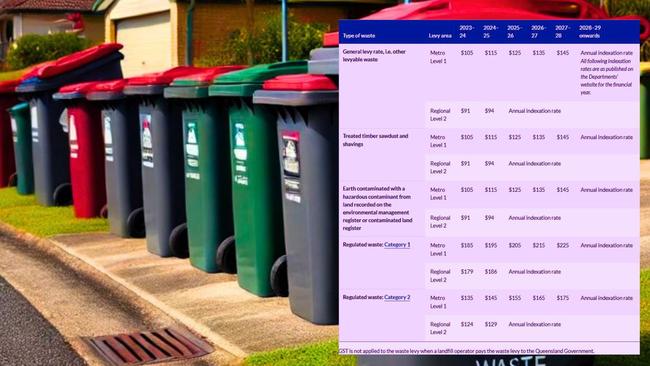
It warned the cuts would shift more costs onto councils, likely leading to higher service fees.
The rising waste costs have also been linked to an increase in illegal dumping, with fresh incidents in Eagleby sparking community outrage this week.
Social media posts showed images of discarded household items, including furniture and appliances, dumped in a public space in the suburb.
Residents expressed frustration at the growing issue, with some arguing that rising tip fees were contributing to more people choosing to illegally dispose of their waste.
If found guilty of illegally dumping, a person faces state government fines of more than $2500 and up to $161,000 from a court, while a business faces fines of $8000 and $806,500 in a court.
While Logan City Council has a taskforce dedicated to tackling illegal dumping, councillors have debated whether increased financial pressures on households, exacerbated by waste levy hikes, could be leading to more unlawful rubbish disposal.
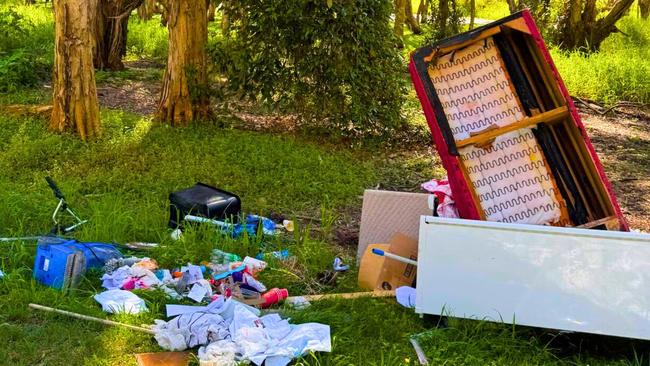
Debate about illegal dumping this week coincided with Logan’s formal request for a review of the commercial waste levy, as well as the state’s push for councils to adopt green waste programs.
Previously, councils received a full rebate plus an additional 5 per cent of the levy for municipal solid waste, effectively shielding residents from direct costs.
Logan this week also called for the rebate to be reduced gradually over 10 years, claiming it would have a significant impact on local households.
The state government claimed the move aimed to encourage resource recovery practices, such as organics recycling but the Logan council report said it also meant Logan residents could expect higher costs for their waste services.
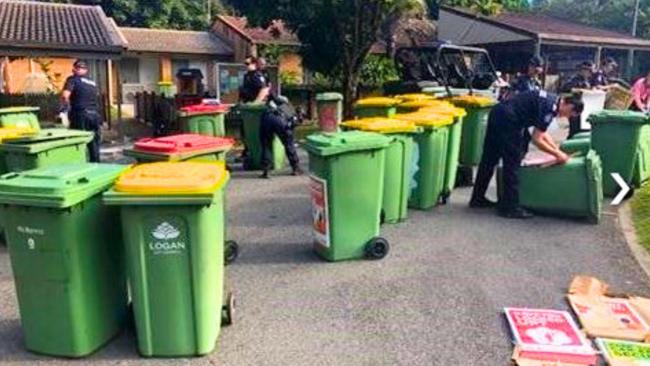
Although this year the levy rebate will rise to 95 per cent, next year the rebate will be slashed to 80 per cent before dropping to 20 per cent by 2033.
The LGAQ urged the state to slow rebate cuts and provide more funding to help councils transition to sustainable waste solutions.
It sent out surveys to councils in January to gauge opinion on the state’s waste levy after forecasts of the significant fee increases over the next decade.
Logan council argued that the state was cutting rebates partly to push councils toward green bin programs for Food Organics and Garden Organics (FOGO) waste.
However, its report estimated a citywide fortnightly green bin collection would add $60 –$70 per household bin fee.
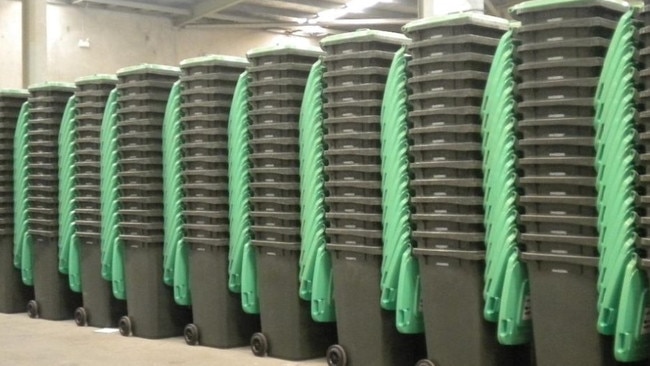
Many councils, including Logan, say the costs of setting up and maintaining FOGO services outweigh landfill savings.
“The cost of implementing the FOGO service would be offset by state funding for purchasing new green bins, and the cost of collecting the green bins and composting the material would be the same or less than paying the waste levy,” the report said.
“In reality, the cost of collecting the green bins and composting is significantly higher than paying the waste levy.
Issues such as limited industry capacity to process organics and stringent state-imposed contamination thresholds contribute to high organics processing costs.”
Businesses will also face higher costs, with the $115 per tonne commercial waste levy expected to rise.
Industries generating large waste volumes — such as construction, hospitality, and retail — could see significant increases, potentially driving up consumer prices.
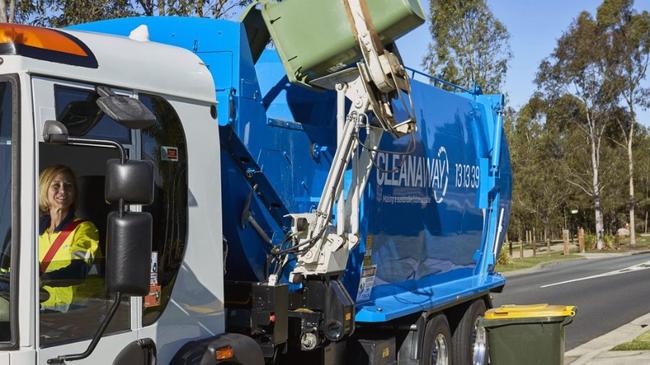
Logan this week also decided to spend hundreds of thousands of ratepayer dollars to replace the lids on every general waste bin in the city.
More than 40,000 bins will have their dark green lids changed to red, at a cost of approximately $1 million, with the federal government kicking in about $20 per bin.
The decision aligns with Australian standards for bins, which stipulate that general waste bins have red lids, recycling bins have yellow lids, and organics bins have lime green lids.
Logan council said in a statement that there were approximately 40,000 properties in the city that still had waste bins with dark green lids.
Since 2012, damaged and stolen garbage bins have been repaired or replaced with red-lidded bins, and all new bins issued also have red lids.
Logan City Council will apply for funding of $20 per household which equates to about $800,000 from the Queensland Government’s Growing the Recovery of Organic Waste via Food Organic and Garden Organics Fund to supply, deliver and replace these dark green lids.
“If this funding application is successful, the replacement project is likely to begin in 2025/26 and take approximately three months to complete,” the council said.
“Replacement would happen on bin collection days and the council would notify residents in advance.
“Council anticipates the Queensland Government funding should cover the cost of the project, however a contingency of $3 per household, which equates to $120,000, has been set aside by the council.
“The project will not proceed if the funding is not received.”




